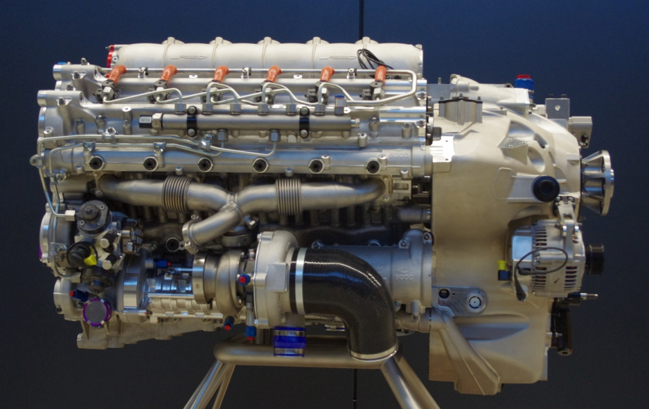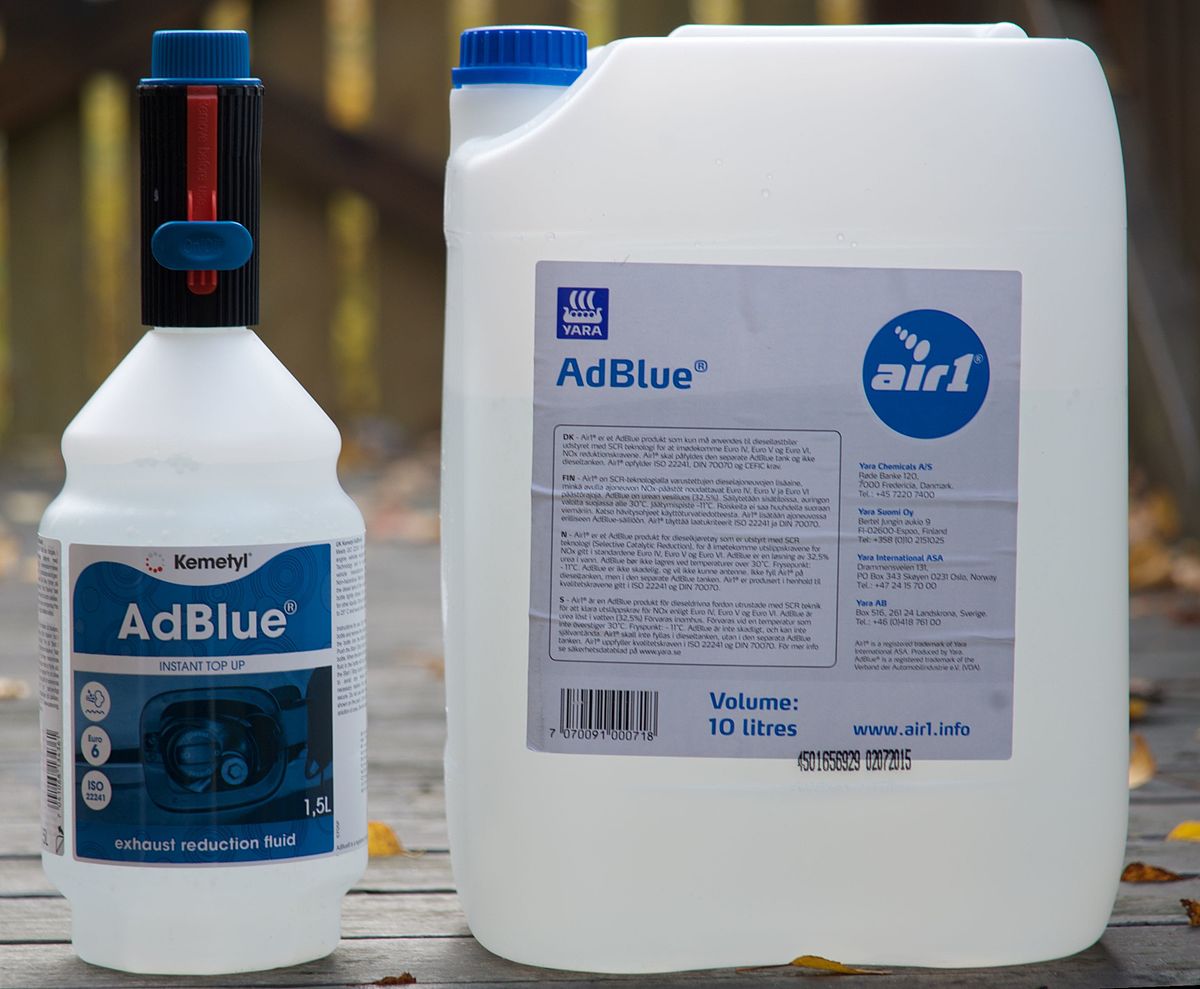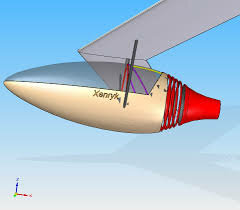You are using an out of date browser. It may not display this or other websites correctly.
You should upgrade or use an alternative browser.
You should upgrade or use an alternative browser.
Otto Aviation Group LLC Celera 500L
- Thread starter seruriermarshal
- Start date
- Joined
- 17 October 2006
- Messages
- 2,393
- Reaction score
- 1,198
OTTO Aerospace | Introducing a revolutionary new aircraft
Supernatural aviation, for the modern world
 www.ottoaviation.com
www.ottoaviation.com
Nurse! Nurse! Get that LearFan on an IV diuretic STAT!
Silencer1
That now I am the Ruler of the Queen's Navee!
- Joined
- 3 August 2009
- Messages
- 897
- Reaction score
- 582
Curiously, Celera 500L has been equipped by RED A03 diesel.

 en.wikipedia.org
The same, that used in Yakovlev Ya-152 trainer.
en.wikipedia.org
The same, that used in Yakovlev Ya-152 trainer.
Scaled-up Celera 1000L also announced


RED A03 - Wikipedia
Scaled-up Celera 1000L also announced

Deltafan
ACCESS: Top Secret
- Joined
- 8 May 2006
- Messages
- 1,699
- Reaction score
- 2,322
Thanks a lot !OTTO Aerospace | Introducing a revolutionary new aircraft
Supernatural aviation, for the modern worldwww.ottoaviation.com
I had been waiting for news on this plane for 9 months. To see if he will keep all its promises : cheap operating costs, 4,500-nautical-mile range (!), maximum cruise speed wiht 460 miles per hour (with 500 hp...) and first commercial deliveries by 2025.
Last edited:
- Joined
- 9 October 2009
- Messages
- 21,979
- Reaction score
- 13,647

Long-awaited Celera 500L 'bullet' plane is finally revealed | CNN
Finally, the mysterious bullet-shaped Celera 500L has been officially revealed. The super-efficicient six-person plane might hit skies by 2025 and could revolutionize private travel
Silencer1
That now I am the Ruler of the Queen's Navee!
- Joined
- 3 August 2009
- Messages
- 897
- Reaction score
- 582
Some videos of RED-equipped aircraft - Celera 500L, Yak-52 testbed and about RED company itself.It's a great engine, combining efficiency with modest weight (by diesel standards), so no surprise in purely technical terms. The Russian connection, perhaps more so.
For one, Diesel can be low carbon but very high Nox what IMO turn the choice of such engine as weird as it can be for a high alt cruising aircraft (you won't get laminar at 10kft).
Moreover, the forseeable drastic reduction in diesel consumption could eventually lead to a significant cost increase for private users.
On the positive side, a robust diesel engine would run on anything.
Moreover, the forseeable drastic reduction in diesel consumption could eventually lead to a significant cost increase for private users.
On the positive side, a robust diesel engine would run on anything.
- Joined
- 16 April 2008
- Messages
- 9,618
- Reaction score
- 14,530
Those hinged wingtips appear to lay flat for take-off ... maximum lift and slower approach speeds ...
But they appear to hinge up for cruise.
I don't see it. There are pics of the aircraft taxiing with the winglets up. In fact, I don't see any recent pics without the winglets, and high-res shots don't show any sign of a hinge. I think they modified the wingtips to incorporate winglets sometime between the initial build and what we see now.
- Joined
- 16 April 2008
- Messages
- 9,618
- Reaction score
- 14,530
The support holding the door open looks cheap. Not a good picture marketing wise.
Regarding the winglets, they are probably there more to add dihedral to the wing.
Yeah, it's a super bare-bones demonstrator, isn't it? Not even a hydraulic strut to hold the door open. Still, spending money on the new tech first seems like a reasonable plan.
- Joined
- 19 July 2016
- Messages
- 4,287
- Reaction score
- 3,466
Lots of grandiose claims that I will to see in the flesh rather than bravado etc.
Absolutely. This team acts professionally. As noted above, if they can prove their claimed achievements, I wouldn't be surprised to see them prized by the market.The support holding the door open looks cheap. Not a good picture marketing wise.
Regarding the winglets, they are probably there more to add dihedral to the wing.
Yeah, it's a super bare-bones demonstrator, isn't it? Not even a hydraulic strut to hold the door open. Still, spending money on the new tech first seems like a reasonable plan.
Last edited:
- Joined
- 9 October 2009
- Messages
- 21,979
- Reaction score
- 13,647
Deltafan
ACCESS: Top Secret
- Joined
- 8 May 2006
- Messages
- 1,699
- Reaction score
- 2,322
Thanks Grey HavocFrom last November:
Otto Aviation does not communicate a lot about this aircraft, which is, from my point of view, one of the most interesting aviation projects of our time ...
- Joined
- 18 October 2006
- Messages
- 4,214
- Reaction score
- 4,924
Keeping ones mouth shut and attempting to stay below the radar, until you have reached an appropriate level of maturity with your technology, seems to be a more popular method these days.
- Joined
- 11 March 2012
- Messages
- 3,251
- Reaction score
- 3,179
For one, Diesel can be low carbon but very high Nox what IMO turn the choice of such engine as weird as it can be for a high alt cruising aircraft (you won't get laminar at 10kft).
Moreover, the forseeable drastic reduction in diesel consumption could eventually lead to a significant cost increase for private users.
On the positive side, a robust diesel engine would run on anything.
Commercial trucks often add diesel exhaust fluid to convert exhaust gases into harmless combinations of nitrogen and hydrogen.
- Joined
- 11 March 2012
- Messages
- 3,251
- Reaction score
- 3,179
Celera looks like its fuselage and horizontal surfaces were designed by an elliptical engineer while its vertical fin was added after the fact by a cartesian engineer.
Hah!
Hah!
Hah!
Hah!
Good point butCelera looks like its fuselage and horizontal surfaces were designed by an elliptical engineer while its vertical fin was added after the fact by a cartesian engineer.
Hah!
Hah!
Wiki
(minus 11 is reached at around 15000ft ISA)The injection rate of DEF into the exhaust depends on the specific after-treatment system, but is typically 2–6% of diesel consumption volume. This low dosing rate ensures long fluid refill intervals and minimizes the tank's size (and intrusion into vehicle packaging space). An electronic control unit adjusts the addition of fluid in accordance with such parameters as engine operating temperature and speed.
-------
DEF freezes at −11 °C (12 °F).[8][9] For the SCR exhaust cleaning system to function at low temperatures, a sufficient amount of the frozen DEF must be melted in as short time as possible, preferably on the order of minutes. For example, 2010 EPA emissions requirements require full DEF coolant flow within 70 minutes.[10][11]

Diesel exhaust fluid - Wikipedia
What really surprises me is the use of a fixed pitch prop (according to the patent script posted by Overscan) for such a high speed range. The application of a torque converter between the crankshaft and the propeller also seems unique.
but nothing...
=7:00-7:40... +comment.
-my 3-place vision (impeller with CRDiff.gear)
Dropbox
Attachments
Diesel engines produce much less NOx than conventional stoichimetric Otto engines, but the exhaust after treatment is more difficult because of the lean burn. Any Gazoline aircraft engine without a catalyst (I guess thats the case for 99.99 %) will emit more NOx than a Diesel engine.For one, Diesel can be low carbon but very high Nox what IMO turn the choice of such engine as weird as it can be for a high alt cruising aircraft (you won't get laminar at 10kft).
Moreover, the forseeable drastic reduction in diesel consumption could eventually lead to a significant cost increase for private users.
On the positive side, a robust diesel engine would run on anything.
NOx will stay only for a short time period in the air, so if they are emited in great height, they don t affect anyone.
I did some calculations for the Celera and came to the conclusion that the performance values are not unrealistic.
This are my estimations:
weight: 4000 kg
gilde ratio (without prop): 24
Propeller efficiency: 85 %
Aircraft speed: 740 km/h => 205 m/s
not considered: combined power from exhaust thrust and cooling: 15 % of engine power
Power needed to push the aircraft through the air: P = 205 m/s * 4000 kg * 9,81 m²/s² *1/24 = 336 kW
Power needed on the propshaft: 395 kW (537 PS)
Max power of the Redair engine: 550 PS
A gilding ratio of 24 (without prop) is a good value but nothing sensational, the Lance Air Evoulution has a similar number.
The weight of 4000 kg is not super light (the Piper Malibu has a MTOW of 2300 kg), it will propably be lighter.
It is important, that the engines will reach high power output in thin air, this might appear unrealistic if you look at standart aircraft engines, but the Republic Rainbow and even more the Grob Strato 2C prooved that it's possible with multi stages turbocharging/supercharging.
This are my estimations:
weight: 4000 kg
gilde ratio (without prop): 24
Propeller efficiency: 85 %
Aircraft speed: 740 km/h => 205 m/s
not considered: combined power from exhaust thrust and cooling: 15 % of engine power
Power needed to push the aircraft through the air: P = 205 m/s * 4000 kg * 9,81 m²/s² *1/24 = 336 kW
Power needed on the propshaft: 395 kW (537 PS)
Max power of the Redair engine: 550 PS
A gilding ratio of 24 (without prop) is a good value but nothing sensational, the Lance Air Evoulution has a similar number.
The weight of 4000 kg is not super light (the Piper Malibu has a MTOW of 2300 kg), it will propably be lighter.
It is important, that the engines will reach high power output in thin air, this might appear unrealistic if you look at standart aircraft engines, but the Republic Rainbow and even more the Grob Strato 2C prooved that it's possible with multi stages turbocharging/supercharging.
This is absolutely untrue. Nox is the major components intervening into our ozone problem. The reaction is even endothermic at that altitude...Diesel engines produce much less NOx than conventional stoichimetric Otto engines, but the exhaust after treatment is more difficult because of the lean burn. Any Gazoline aircraft engine without a catalyst (I guess thats the case for 99.99 %) will emit more NOx than a Diesel engine.For one, Diesel can be low carbon but very high Nox what IMO turn the choice of such engine as weird as it can be for a high alt cruising aircraft (you won't get laminar at 10kft).
Moreover, the forseeable drastic reduction in diesel consumption could eventually lead to a significant cost increase for private users.
On the positive side, a robust diesel engine would run on anything.
NOx will stay only for a short time period in the air, so if they are emited in great height, they don t affect anyone.
Diesel engines produce way more Nox not only because of the partial combustion mode of such engines, but also due to the quality of Diesel that contain more reactive species like sulfur.
It's an old joke from pro-diesel to compare their engines fitted with a catalyzer with gasoline ones devoid of it.
No, that's not correct. The combustion process of a Diesel is much more complete thant that of a gazoline engine due to the fast burn rate (high compression ratio) and surplus Air. Otto engines have higher combustion temperatures due to the (in most cases) almost stiochiometric combustion. There is a NOx peak at Lambda 1,1 (10 % exess air) which is about the ratio gazoline aircraft engines are operated for max. efficiency (leaning). Diesel engines are operated at much leaner Lambda in cruise flight which reduces NOx emissions.
In a car, the conventional catalyst will emininate almost all NOx as long as Lambda is </= 1, with lean burn, it will be much more effort (by using Urea, of NOx trap with periodical regeneration).
I don't know the situation in the US, but in Europe the suphur content of Diesel fuel is equal to Otto fuel, it depends on the regulation, not on the engine parameters.
Do you have any quatation about NOx affecting the Ozone layer?
In a car, the conventional catalyst will emininate almost all NOx as long as Lambda is </= 1, with lean burn, it will be much more effort (by using Urea, of NOx trap with periodical regeneration).
I don't know the situation in the US, but in Europe the suphur content of Diesel fuel is equal to Otto fuel, it depends on the regulation, not on the engine parameters.
Do you have any quatation about NOx affecting the Ozone layer?
Last edited:
sorry for the German quotations, but the graphs should be clear:
here you find the NOx raw emissions for an Otto (or gazoline) engine:
and here you find the similar diagram for an Diesel engine:
 www.motor-talk.de
www.motor-talk.de
Of course, the exhaust emission in modern cars are less than a procent of the raw emissions and they are more related to exhaust temperature than to the raw emissions. But I don't know a single aircraft engine with an aftertreatment system and in that case, the Diesel is allways better (Even if you compare the soot emissions with the lead emissions...).
here you find the NOx raw emissions for an Otto (or gazoline) engine:
and here you find the similar diagram for an Diesel engine:
MOTOR-TALK - Europas größte Auto- und Motor-Community!
Of course, the exhaust emission in modern cars are less than a procent of the raw emissions and they are more related to exhaust temperature than to the raw emissions. But I don't know a single aircraft engine with an aftertreatment system and in that case, the Diesel is allways better (Even if you compare the soot emissions with the lead emissions...).
Last edited:
Such simplicity is not what characterize a highly dynamic process as seen b/w an engines and a vehicle moving through the air or on the surface.
GA a/c alter their power settings constantly. Just like automobiles do. Bench test coupled with catalizer are devoid of any applicable results.
You can browse the web for the details on the formation processes for Ozone. Look for the Zeldovitch reaction.
GA a/c alter their power settings constantly. Just like automobiles do. Bench test coupled with catalizer are devoid of any applicable results.
You can browse the web for the details on the formation processes for Ozone. Look for the Zeldovitch reaction.
NOx emissions are knowen to produce Ozone on the ground, not to reduce them high altitude, still Diesel aero engines emit much less of them than gazoline aero engines.
The raw emissions are very much like shown in the diagram. Load and speed changes in aircraft engines are so slow, that they don't affect the corelation between the diagrams and the reality.
In cars, the emissions are meassured in highly dynamic operation, with Euro 6 regulations, there are real world driving test for emission mandatory. You have to fullfill the regulations with any driver in real treffic.
The raw emissions are very much like shown in the diagram. Load and speed changes in aircraft engines are so slow, that they don't affect the corelation between the diagrams and the reality.
In cars, the emissions are meassured in highly dynamic operation, with Euro 6 regulations, there are real world driving test for emission mandatory. You have to fullfill the regulations with any driver in real treffic.
I tried to find some information about how NOx can affect the Ozone layer (which might be of intrest if you fly that high). It seams, that the impact of aircraft NOx on the Ozone layer is small, some say, it will slightly reduce the ozone layer, some say it will slightly increase the ozone layer. Here is one quotation:
"The results from both models show that aircraft emissions in the atmosphere stimulate additional ozone production. The effect of the exhaust gases, however, depends on many different factors, such as the flight altitude, the time of day and season as well as the concentration of other trace gases already in the atmosphere. In the ozone-rich, stratospheric air, the short-term effects of aircraft emissions with regard to the ozone concentration are very small." [https://www.spektrum.de/news/flugzeuge-und-ozon/340727]
BTW, the google translation works really very well between German/English at least for scientific papers
"The results from both models show that aircraft emissions in the atmosphere stimulate additional ozone production. The effect of the exhaust gases, however, depends on many different factors, such as the flight altitude, the time of day and season as well as the concentration of other trace gases already in the atmosphere. In the ozone-rich, stratospheric air, the short-term effects of aircraft emissions with regard to the ozone concentration are very small." [https://www.spektrum.de/news/flugzeuge-und-ozon/340727]
BTW, the google translation works really very well between German/English at least for scientific papers
Nox depletes Ozone. It's a green house gas per se (N20). Read the documentation linked.
Also, in the context of that thread, nobody points that the Celera 500 is a dangerous machine that should not fly. The problem resides in assessing aero diesel engines as benign or economical. They are not. The conversion of GA aircraft to diesel on a large scale would be disastrous and costly for their owners.
Also, in the context of that thread, nobody points that the Celera 500 is a dangerous machine that should not fly. The problem resides in assessing aero diesel engines as benign or economical. They are not. The conversion of GA aircraft to diesel on a large scale would be disastrous and costly for their owners.
N2O is not emitted by combustion processes but by agriculture. Engines and turbines emit NO and NO2 not N2O, only N2O is a green house gas.
There are many happy owners with their Diesel powered Diamonds flying around and telling how much cheaper they are to operate. You should consider, that the price of Jet-A (which is used in Diesel Aero engines) is much cheaper than the price of Mogas/Avgas in most parts of the world.
There are many happy owners with their Diesel powered Diamonds flying around and telling how much cheaper they are to operate. You should consider, that the price of Jet-A (which is used in Diesel Aero engines) is much cheaper than the price of Mogas/Avgas in most parts of the world.
C'mon it'a a typo.
Yes. Mogas is more expensive (and way more cleaner)... But for how long? What are the sustainment factors when the largest market for diesel fuel, compatible with small displacements, is moving away from it (automotive)?!
50% of Nox emissions come from the automobiles...
Yes. Mogas is more expensive (and way more cleaner)... But for how long? What are the sustainment factors when the largest market for diesel fuel, compatible with small displacements, is moving away from it (automotive)?!
50% of Nox emissions come from the automobiles...
I doubt, that it is a typo, because you related NO and NO2 to the greenhouse effect, which is wrong.
It's hard to predict the future, but I'm pretty shure that Jet-A will be available for a much longer time span than 100 LL and Mogas. The Aero Diesels consume the same fuel like the jets, not a small niche fuel like 100 LL. It's not the fuel which is cleaner or not, it's the emissions, and as wrote (with quotations), Aero Diesel engines are cleaner than todays gazoline aero engines.
The marked is moving away from Diesel engines for cars simply by political pressure, not because of the engines are not giving a real value for the customers.
It's hard to predict the future, but I'm pretty shure that Jet-A will be available for a much longer time span than 100 LL and Mogas. The Aero Diesels consume the same fuel like the jets, not a small niche fuel like 100 LL. It's not the fuel which is cleaner or not, it's the emissions, and as wrote (with quotations), Aero Diesel engines are cleaner than todays gazoline aero engines.
The marked is moving away from Diesel engines for cars simply by political pressure, not because of the engines are not giving a real value for the customers.
The marked is moving away from Diesel engines for cars simply by political pressure, not because of the engines are not giving a real value for the customers.
Oh, yeah, they are dying from it. Such a great value.
For People working as a welder t is allowed that they are sorounded by air with 5000 PPM NOx (in Germany) for 8 h a day. So how many people will dy from a short time exposure to 50 ppm NOx on a road crossing? If you use the statistical methods of the "enviromental" NGO's, smokers would have to dy within a couple of month!
Anyway, areo Diesels are emitting less NO2 and NO than gazoline aero engines, so you should promote to use them instead of the gazoline engines!
Anyway, areo Diesels are emitting less NO2 and NO than gazoline aero engines, so you should promote to use them instead of the gazoline engines!
You are comparing two different era of technology. Modern gazoline engines emmit way less. Obviously, legacy engines are not.
You should also read the documentation that is linked upon your request. It's difficult to have a discussion if there is no points in enriching our view with the arguments of others.
You should also read the documentation that is linked upon your request. It's difficult to have a discussion if there is no points in enriching our view with the arguments of others.
Modern gazoline engines have quite similar raw emissions like the old ones, but the exhaust after treatment became much more effective. As long, as there are no aircraft engines with any type of after treatment, the Diesel will allways be cleaner than any gazoline engine.
After treatment systems for aircraft applications may be a topic one day, but as long as 100 LL is beeing sold, it is impossible to introduce any catalyst for a gazoline engine. The use of lead in fuel is by far the most dangerous aspect of the emissions!
The conditions for exhaust after tretment in aero engines are totally different than in car engines, the systems must be more lightweight than in cars but the thermal conditions are much better than in road applications. But by now, this is not topic at all.
After treatment systems for aircraft applications may be a topic one day, but as long as 100 LL is beeing sold, it is impossible to introduce any catalyst for a gazoline engine. The use of lead in fuel is by far the most dangerous aspect of the emissions!
The conditions for exhaust after tretment in aero engines are totally different than in car engines, the systems must be more lightweight than in cars but the thermal conditions are much better than in road applications. But by now, this is not topic at all.
- Joined
- 27 May 2008
- Messages
- 1,179
- Reaction score
- 2,485

Greenhouse effect of NOX - PubMed
Through various processes the nitrogen oxides (NOX) interact with trace gases in the troposphere and stratosphere which do absorb in the spectral range relevant to the greenhouse effect (infrared wavelengths). The net effect is an enhancement of the greenhouse effect. The catalytic role of NOX...
“The catalytic role of NOX in the production of tropospheric ozone provides the most prominent contribution. The global waming potential is estimated as GWP (NOX = 30 - 33 and 7 - 10 for the respective time horizons of 20 and 100 years, and is thereby comparable to that of methane.”
So 1kg of NOX produces the same global warming as 30-33kg of CO2 for 20years declining linearly to 7-10kg over the next 100years;-
Similar threads
-
'How California's Bullet Train Went Off the Rails' (New York Times)
- Started by Grey Havoc
- Replies: 29
-
-
Raytheon AGM-181 Long Range Stand Off Weapon (LRSO)
- Started by bobbymike
- Replies: 194
-
-
NEWS: Clean engines, wings that fold: Boeing dreams of futuristic jets
- Started by Sentinel Chicken
- Replies: 2

